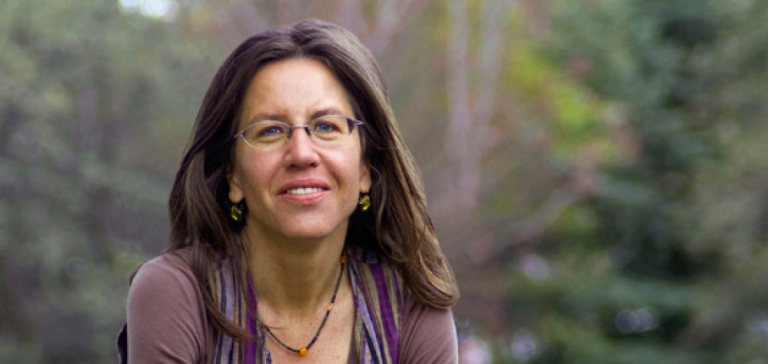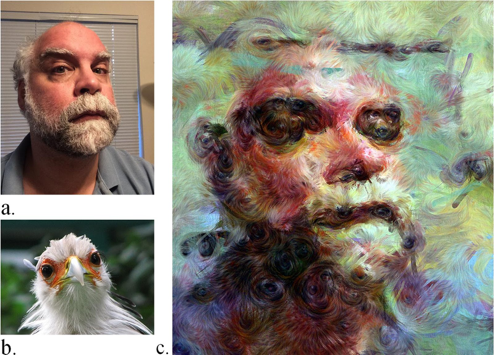CREATIVITY AND THE EVOLUTION OF THE WORLDVIEWS: AN INTERVIEW WITH LIANE GABORA

Photo from news.ok.ubc.ca
ARTICLE BY ADELE MCCANN
Creativity is an illusive and mysterious thing. It is difficult to pinpoint where a great idea comes from and the process by which it comes into being. I had the pleasure of a conversation with UBC Okanagan Professor Liane Gabora to discuss her theory of creativity and her exploration into this area. She stated that creativity is best known as the process that fuels the evolution of culture. We might consider that a flower could inspire a song, which in turn might inspire a painting, which then goes on to inspire the invention of a certain kind of paintbrush, and so on. Creativity is a constantly evolving and adaptive thing that is constantly driving humanity’s evolution and adaptation to the world. However, Liane’s Honing Theory posits that it is not the creative outputs of a painting or a song that comprise this evolutionary process, but rather our own worldviews that give rise to creative processes. It is our perspectives that are evolving and regenerating and art is a visible manifestation of this underlying internal change. There are two components of the process by which these worldviews evolve: communal exchange and self-organisation.
Communal exchange involves interaction with other elements of your world – very often people. You assimilate these interactions and that affects your worldview – your internal web of understandings about the world and your place in it, the driving force behind your creative output. Consider you might see a monkey eating a banana at the zoo and are inspired to create a cartoon about monkeys. You cannot create anything new for the world until you have interacted with what is already there. It is in this way that we can evolve a creative idea by talking about it with other creative individuals, calling to mind the success of the salons in early twentieth century France. You might have two people exchanging ideas equally, or have a teacher and a learner, wherein the learner’s worldview is restructured much more than that of the teacher. Potentially. As a teacher, Liane expressed that she would often set an idea in a student’s mind only to have them work on it until it had taken new forms that she would never have considered. To set an idea in another’s mind, who has a different worldview, means to lose control of it, as it reforms in a new light and may ultimately change the original thinker’s worldviews. It is in this way that communal exchange fosters cultural evolution. Liane said of her theory of creativity itself, that it is a “theory born out of a lifetime of surrounding myself with creative people.”
While communal exchange involves absorbing new information from the world, self-organization involves reflecting on information we have already absorbed, considering it from new perspectives, and thus, reconfiguring the network of understandings that make up our worldview. So, while it’s important to interact with the world, you can still produce creative output in isolation by restricting and reassociation of what is already in your brain. As a painter, you might make a mark on paper, which suggests another, until the piece takes on a momentum of its own. Or, as an author you may start writing a book and have it gets away from you as you put pen to paper and find it ends up somewhere entirely different than you had originally thought. Characters might take on a life of their own, acting in ways you did not anticipate.
One of the most valuable things that my conversation with Liane made me consider; is my own creative process and how it is made up of external input. It is worth taking a moment to consider yours. Do you know where your ideas come from? Have you got a good grasp on your own worldview? Do you recognise when something enters your consciousness and shifts your worldview, thereby affecting the products of your creative process? It is important to engage in creative activity and worthwhile to be aware of the process. Liane, talented in a multitude of disciplines, shared her own creative interests and applications. One such application of her creative theory is a computer program that she created with equally talented Professor Steve DiPaola and PhD. student Graeme McCaig. The program uses Honing Theory and the algorithms Deep Style and Deep Dream to generate art. It takes one piece, perhaps a photo of a face, and a second piece, maybe a modern art piece of a car, and extracts and reorganises the information into something entirely new. The network, like the mind, is constantly self-organising and makes use of the way in which the mind is constantly shifting between rational and associative ways of processing information.

Photo a product of deep learning based algorithms for visual blending and Honing Theory – Liane Gabora, Steve DiPaola, Graeme McCaig
As our worldviews accept new input and give rise to our creative output, they are constantly reorganising. Each new idea is informed by a number of others; in a sense, there are no original ideas. Every new idea or creative creation does not just belong to the creator but to the world. We never truly know how something will develop and, as Liane put it, are not the owners of creative ideas but the conduits for them. Ideas are made up of an unquantifiable number of previous impressions that our minds have absorbed. In Liane’s words, “we don’t own our opinions any more than we own our children.” We can nurture them and provide them everything they need to grow but ultimately they are independent of us and of our responsibility. Even while developing this theory, Liane was composing a piece of music – one art inspired another and they were able to inform each other. She writes short stories and novels and teaches a class wherein they engage in-group art. These artistic disciplines have been shaped by the study of creativity. Liane expressed that the more she studied it the more she came to trust her creative process and not to force it. This sentiment has been shared by others, including myself, who have told her how helpful it is to think about the way our minds create creative output and the way in which this contributes to the evolution of culture. Liane expressed that the sentiment shared with her is how valuable people find it to respect “their own creative process. It’s a unique thing.” If my conversation with Liane gave me one takeaway, it was this; great ideas belong to the world and it is because of this that we are able to evolve.






